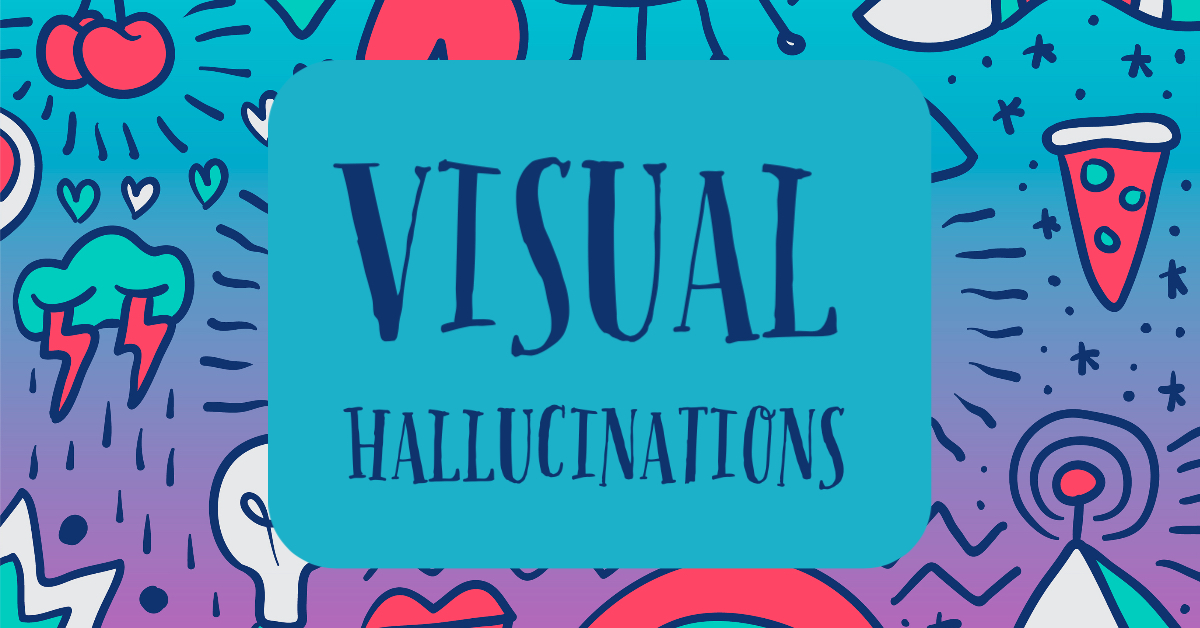

It has also been reported that visual imagery is increased in people with schizophrenia ( 19). For example, over 60% of people with schizophrenia experience visual distortions involving changes in clarity, form, brightness, color, motion, or persistence of visual stimuli ( 8, 12– 18) (see Table 1).


Visual hallucinations are not the only form of visual perceptual anomaly experienced in schizophrenia. These data suggest that, at least in some subgroups of individuals with schizophrenia, the rate of VH may be higher than traditionally thought, and that standard assessments in clinical settings may often fail to adequately probe this type of symptom. Several other studies of people with a chronic course of schizophrenia have reported similar rates, such as 40% ( 7), 49% ( 8), 57.2% (in the United States vs. These results suggest that studies that rely on clinician reports may yield underestimates of VH prevalence. ( 6) found that a chart review of discharged schizophrenia patients with a chronic course of illness identified a history of VH in 32% of the cases, whereas their prospective evaluation with another patient sample indicated a VH prevalence of 56% notably, in 43% of the cases with a history of VH, it was the research interview that first documented this symptom ( 6). Findings from other individual studies suggest that the variability in prevalence across investigations may be due to methodological differences in how VH are assessed, as well as clinical differences across samples. A subsequent large-scale study of non-affective psychosis ( N = 1,119) indicated that 37% of people with schizophrenia and 47.5% of people with schizoaffective disorder had experienced VH at some point ( 5). Although hallucinations in psychotic disorders occur most commonly in the auditory modality, a recent review of visual hallucinations (VH) in schizophrenia reported a weighted mean prevalence of 27%, with a notably wide range across studies (range: 4–65% SD = 9) ( 4). Hallucinations are one of the characteristic symptoms of schizophrenia and other psychotic disorders, occurring at some point in ~60-80% of those affected ( 1– 3). In short, our goal is to cast a fresh light on the under-studied symptoms of VH and visual distortions in schizophrenia for the purposes of informing future work on mechanisms and the development of targeted therapeutic interventions. In particular, we emphasize the potential role of alterations at multiple points in the visual pathway, including the retina, the roles of multiple neurotransmitters, and the role of a combination of disinhibited default mode network activity and enhanced state-related apical/contextual drive in determining the onset and content of VH. Specifically, we: (1) present findings on the nature and frequency of VH and distortions in schizophrenia (2) review proposed syndromes of VH in neuro-ophthalmology and neuropsychiatry, and discuss the extent to which these characterize VH in schizophrenia (3) review potential cortical mechanisms of VH in schizophrenia (4) review retinal changes that could contribute to VH in schizophrenia (5) discuss relationships between findings from laboratory measures of visual processing and VH in schizophrenia and (6) integrate findings across biological and psychological levels to propose an updated model of VH mechanisms, including how their content is determined, and how they may reflect vulnerabilities in the maintenance of a sense of self. Given the clinical significance of these perceptual disturbances, our aim is to help address this gap by updating and expanding upon prior reviews. visual hallucinations in psychotic disorders, which is the reverse of what is found in other neuropsychiatric conditions. These symptoms have received relatively little attention in the literature, perhaps due to the higher rate of auditory vs. Schizophrenia is characterized by visual distortions in ~60% of cases, and visual hallucinations (VH) in ~25–50% of cases, depending on the sample.

4Center for Visual Science, University of Rochester Medical Center, Rochester, NY, United States.3Department of Ophthalmology, University of Rochester Medical Center, Rochester, NY, United States.2Department of Neuroscience, University of Rochester Medical Center, Rochester, NY, United States.1Department of Psychiatry, University of Rochester Medical Center, Rochester, NY, United States.


 0 kommentar(er)
0 kommentar(er)
